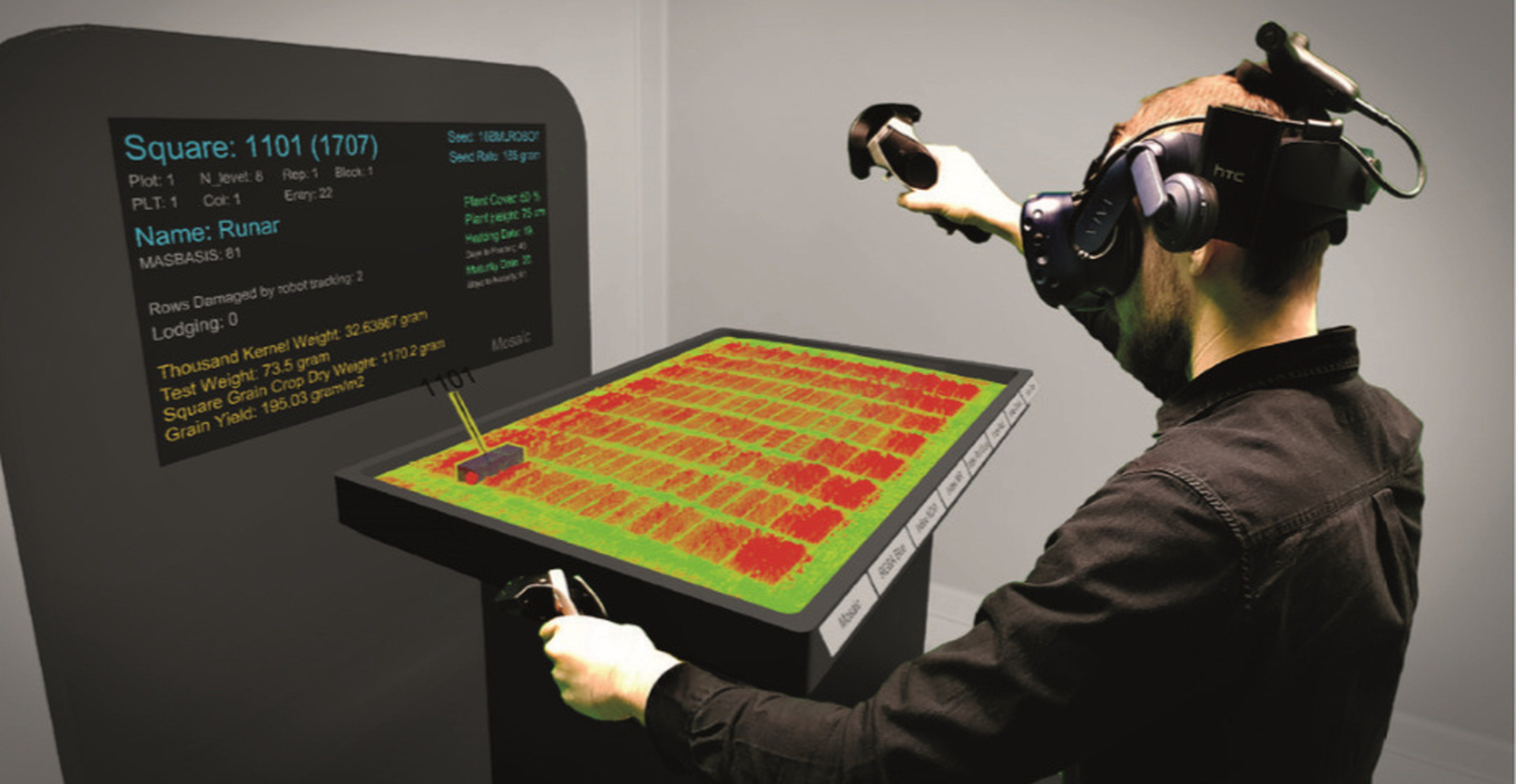Virtual Reality in the Field – the vPheno Project

Prototype developed as part of
vPheno. Photo: Pål S. Vindfallet
The Norwegian University of Life Sciences (NMBU) is coordinating an industrial innovation project in plant breeding that seeks to combine high throughput field phenotyping with genomic selection and virtual reality in collaboration with the plant breeding company Graminor, the International Maize and Wheat Improvement Center (CIMMYT) in Mexico as well as Boston University in the USA.
The five-year project “Reliable and efficient high-throughput phenotyping to accelerate genetic gains in Norwegian plant breeding virtual phenomics (virtual phenomics; vPheno)” is now in its third year.
It was the first project of its kind in Norway to start exploring the use of robots and drones as phenotyping tools in plant breeding. Using wheat as a model, the main aim is to develop user-friendly phenotyping tools that can be applied in practical plant breeding under Norwegian conditions. To this end, the project is working closely with the wheat breeders at the Graminor plant breeding company. The project uses UAVs fitted with RGB and multispectral cameras to collect 3D and multispectral vegetation data from field trials. This can replace the time-consuming manual plant height measurement, while the multispectral vegetation indices provide information that cannot be obtained by the human eye. For close-up imaging, the project is making use of a field phenotyping robot developed by the robotics group at NMBU and operated by Saga Robotics. These close-up images are useful for detecting and counting important plant features like for instance the number of wheat heads per square meter.
Genomic selection offers great opportunities for plant breeders to accelerate genetic gains in their breeding programmes. In the vPheno project, the Graminor breeders and the team at NMBU have partnered with the International Maize and Wheat Improvement Center (CIMMYT) in Mexico and Boston University in the USA to improve genomic prediction models by incorporating vegetation data from the high-throughput field phenotyping into the prediction models to make them more robust.
Another vision of the project is to bring the field to the breeder by developing a virtual reality tool whereby plant breeders after the season can go back in time to have a second look at their field trial plots. This virtual world is developed by combining the image data gathered from the UAVs and the field robot at multiple times during the field season. This work is done in collaboration with the Hamar-based company Making View and a prototype is already developed for testing.
The vPheno project is funded by the Foundation for Research Levy on Agricultural Products (FFL) and the Agricultural Agreement Research Fund (JA) in Norway through NFR grant 267806 and runs from 2017 to 2021.
For further info, contact project coordinator Morten Lillemo: morten.lillemo@nmbu.no
